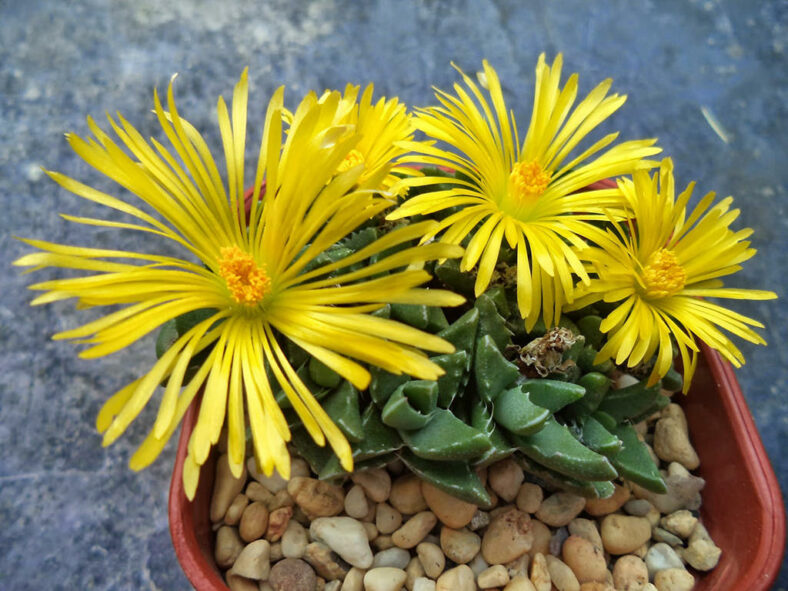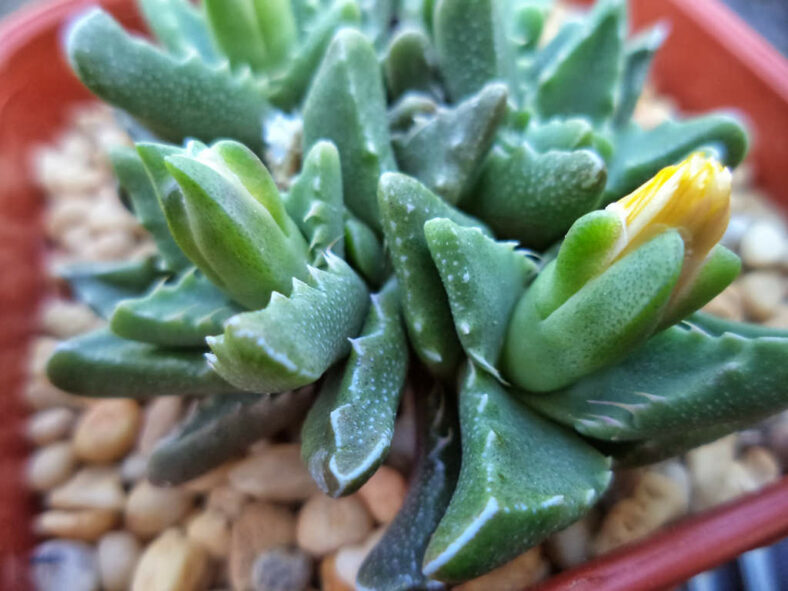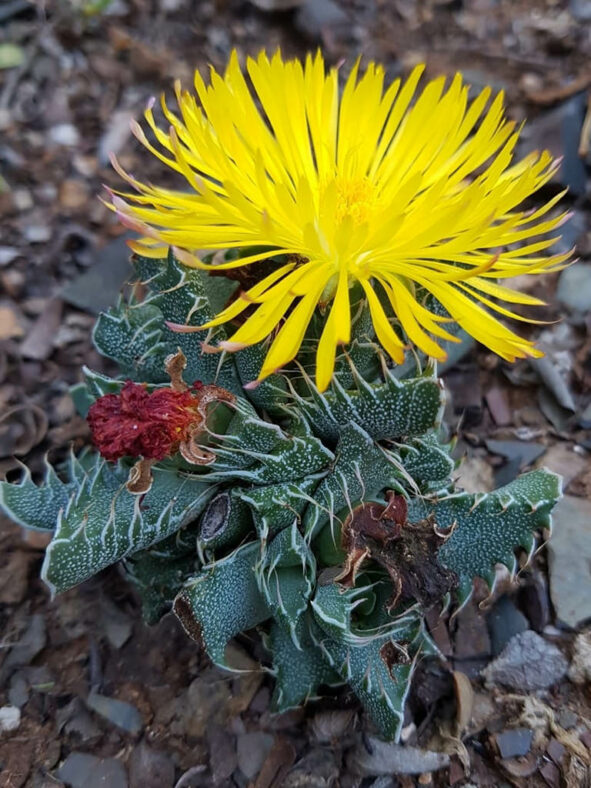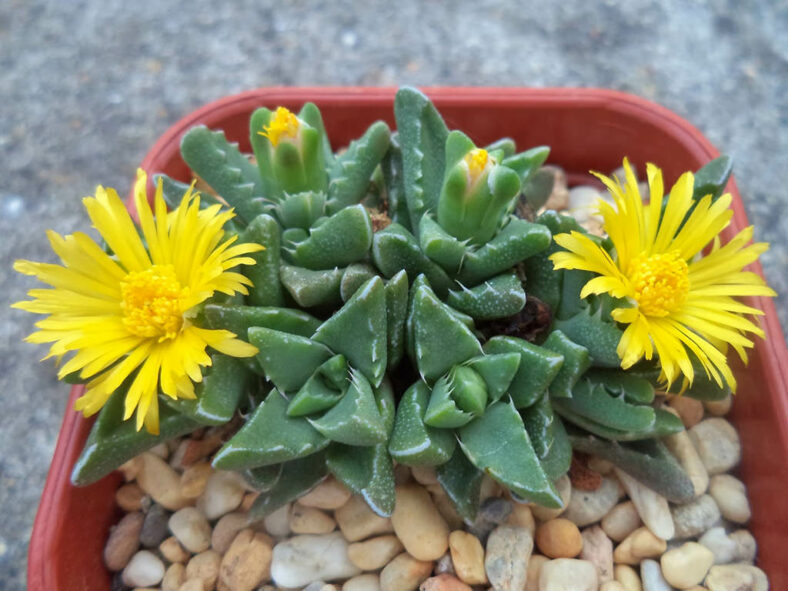Faucaria gratiae is similar to Faucaria tigrina but has fewer teeth, only on the upper half of the leaves, and no confluent flecks. Additionally, its fruits and seeds are much smaller.
Scientific Name
Faucaria gratiae L.Bolus
Synonym(s)
Faucaria hooleae
Scientific Classification
Family: Aizoaceae
Subfamily: Ruschioideae
Tribe: Ruschieae
Genus: Faucaria
Etymology
The specific epithet "gratiae (pronounced GRA-tee-ay)" means "grace" and possibly refers to the graceful appearance of the species.
Origin
Faucaria gratiae is native to South Africa. It grows in sandy soil in cracks and hollows of flat sandstone plates and is restricted to a radius of 1.9 miles (3 km) around Riebeek East, a village in the Eastern Cape province.
Description
Faucaria gratiae, also known as Faucaria hooleae, is a small, clump-forming succulent with a very short stem and erect to spreading leaves with irregularly toothed margins. It can grow up to 3.2 inches (8 cm) tall. The leaves are shiny green to reddish or purplish, with many rough white dots along the surfaces, and have whitish margins and keel. They are thick and fleshy, measuring up to 1.4 inches (3.5 cm) long and 0.8 inches (2 cm) wide. Each leaf margin has 2 to 5 teeth that develop into awns.
The yellow flowers have 60 to 85 narrow petals and bloom in late fall and early winter. The fruits have a bell-shaped base and a rounded top when closed.

How to Grow and Care for Faucaria gratiae
Light: In order to thrive, this plant needs to be exposed to full sun. Make sure it gets at least six hours of direct sunlight every day. Although growing it on a sunny windowsill indoors is a good idea, moving it outside during the growing season (from spring to fall) is recommended to ensure it gets the required amount of sunlight.
Soil: Faucaria gratiae requires porous soil that allows water to drain away quickly. You can use a commercial potting mix for succulents or make your own.
Temperature: This plant enjoys high temperatures and can also withstand mild frost. It grows best in USDA Plant Hardiness Zones 9b to 11b, with average minimum winter temperatures ranging from 25 to 50 °F (-3.9 to 10 °C).
Watering: To keep your Faucaria gratiae healthy, water it deeply and allow the soil to dry out completely before watering again. During the winter dormancy period, it requires little to no water. If you notice wrinkled leaves, it is a sign that your plant needs water.
Fertilizing: For optimal growth, fertilize it once or twice during the active growing season with a water-soluble fertilizer diluted to half the recommended strength. Stop fertilizing in the winter.
Repotting: Faucaria gratiae does not need to be repotted frequently. Repot only when it has outgrown its container, typically every two or years. Early spring, just before the growing season starts, is the best time for repotting.
Propagation: One way to propagate this plant is by dividing clumps, which is quite simple. Another option is to start from seeds by sowing them in well-draining soil during spring. The best time for dividing is late spring or early summer.
Learn more at How to Grow and Care for Faucaria.
Toxicity of Faucaria gratiae
Faucaria gratiae is considered non-toxic and safe around kids and pets.
Links
- Back to genus Faucaria
- Succupedia: Browse succulents by Scientific Name, Common Name, Genus, Family, USDA Hardiness Zone, Origin, or cacti by Genus
Photo Gallery
Click on a photo to see a larger version.


